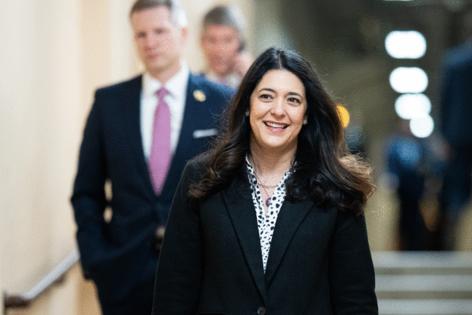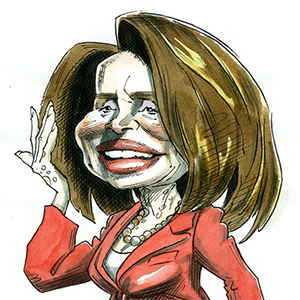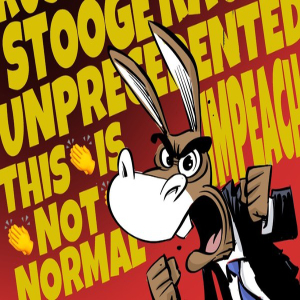They wanted to 'fix Congress.' They still do, modernizers say
Published in Political News
Congressional modernization was having a moment. A select committee, convened to come up with ways of improving the House, drafted more than 200 recommendations over the course of the 116th and 117th Congress. A small but significant pool of money was allocated for modernization projects, and a subcommittee was spun off in the 118th to implement those goals.
All the while, Rep. Derek Kilmer was beating the modernization drum, launching a caucus to “Fix Congress” and raising alarms about the need for things like a continuity plan in the event of a mass casualty event.
But Kilmer, a Washington Democrat, retired at the end of last Congress after more than a decade in the House. So far this year, the modernization subcommittee has not yet met publicly, and the House’s modernization budget is facing a proposed cut.
As the Trump administration continues to flood the zone and lawmakers sink their teeth into bigger, more time-consuming endeavors, like Republicans’ freshly passed reconciliation package, modernization looks and feels a bit different in the 119th Congress.
“It’s been an exhausting first six months of this Congress,” said Rep. William R. Timmons IV, R-S.C., a frequent partner of Kilmer’s on efforts to improve the institution, including the Fix Congress Caucus, which has been slow to get off the ground this year. Kilmer, who now works at The Rockefeller Foundation, declined to comment for this story.
“We’re just doing so much, whether it’s dealing with consequences of the trade and tariffs, whether it’s the Big Beautiful Bill, all of the reforms we’re seeing by the administration,” Timmons continued. “We might’ve slowed down a little bit … but that’s just because of bandwidth.”
“There are a bunch of competing priorities within Congress right now,” said Taylor Swift, a former House staffer and director of congressional engagement at the Rebuild Congress Initiative, who spoke in his personal capacity and not on behalf of his employer. “It’s just (taking on) a different form.”
Different does not mean worse, modernization advocates argue. And even if congressional modernization — already a bit of a niche issue — is taking a lower profile role, they insist progress is still being made.
“It is definitely a priority, and there are a lot of things in the works,” said Rep. Stephanie Bice, R-Okla., who chairs the House Administration Modernization and Innovation Subcommittee. “But I don’t want to have hearings just to have hearings. I want to have hearings that are actually meaningful and will accomplish an objective. And right now our focus has really been on the implementation side.”
Incremental steps
Bice pointed to what the subcommittee has been doing behind the scenes. Earlier this Congress, she held a roundtable to go over projects and technology needs with the House chief administrative officer, the House clerk, and the directors of the House Office of the Legislative Counsel and the Government Publishing Office. She coordinated a bipartisan breakfast discussion with freshman members to gather feedback on changes to new member orientation, which Bice helped oversee.
And she touted a revised constituent casework transfer system rolled out last year, which encourages members to choose to share their casework data with their eventual successor.
According to data provided by the House Administration Committee, nearly 70 percent of departing members chose to transfer casework data to their replacements via a new form distributed months before they left. It gave members more options to share data while also withholding certain sensitive information. At the end of the 117th Congress, just 50 percent of departing lawmakers opted to transfer casework files.
Sharing casework is a personal issue for Bice, who said her predecessor did not share those files with her ahead of her arrival in the House in 2021.
“This became really important after the tragic and unexpected passing of Sylvester Turner,” Bice said, referring to the Texas Democrat who died suddenly in March, two months after he was sworn in. According to Bice, the transfer form is now provided to incoming members as well as departing ones, and Turner was among those who opted to share.
“So his successor now has the ability to pick up those casework files and run with them. I think that was a huge win for modernization,” Bice said.
J.D. Rackey, a senior policy analyst at the Bipartisan Policy Center and a former staffer on the modernization select committee, said from his perspective, implementation of select committee recommendations is continuing at the same pace as it has in the past, even if it may not be as public facing.
Looking under the hood
Still, challenges persist. The Modernization Initiatives Account — which was established by the spending law of fiscal 2021 to pay for projects that “promote administrative efficiencies and expand the use of innovative technologies” in the House — saw its funding cut significantly in the full-year continuing resolution that Congress passed in March. Rackey was among a group pushing for its reinstatement. But in the fiscal 2026 Legislative Branch bill that advanced out of the House Appropriations Committee last month, the account would receive just $4 million, down from a height of $10 million.
And as the modernization subcommittee continues to tick off recommendations made by the select committee, there is less low-hanging fruit. According to the subcommittee website, there are 79 select committee recommendations still outstanding, 25 of which are in progress and 54 of which still need attention.
Rackey said some of those are straightforward and within reach, like a tool to help member offices coordinate constituent tour requests. Others, like changes in the congressional calendar to limit travel days and maximize work days, or proposals to overhaul the budget and appropriations process that Kilmer championed, are much larger lifts that lack enough support from leadership to be put into practice, at least for now.
The subcommittee now must also reckon with new technology that did not exist — at least in its current form — when the select committee was putting together its recommendations, most notably artificial intelligence.
Typically the House convenes a bipartisan select committee to look under the hood of Congress every 20 to 30 years. But Timmons, Bice and others said emerging tech means lawmakers need to be constantly thinking about these issues. That’s one reason the subcommittee tacked on “Innovation” to its official name.
“We certainly want to make sure that we are looking at the recommendations that were given in the 116th and the 117th Congress,” Bice said. “But we’re certainly also looking forward to emerging technology.”
But the biggest obstacle to meaningful modernization work, according to some, may be the shifting political landscape. The modernization select committee was known for its bipartisan displays, seating Republicans and Democrats next to each other, hosting bipartisan dinners and encouraging civility among its members and Congress more broadly.
Rep. Norma J. Torres, D-Calif., the ranking member on the Modernization and Innovation Subcommittee, said that collegial vibe is not necessarily gone. But as President Donald Trump encroaches on the legislative branch and makes new headlines with every passing day, there is little focus on the incremental improvements made by a cadre of congressional modernizers, she said.
“In terms of the actions of this administration, it’s really sucked the air out of anything else that we do,” Torres said.
_____
©2025 CQ-Roll Call, Inc., All Rights Reserved. Visit cqrollcall.com. Distributed by Tribune Content Agency, LLC.

























































Comments